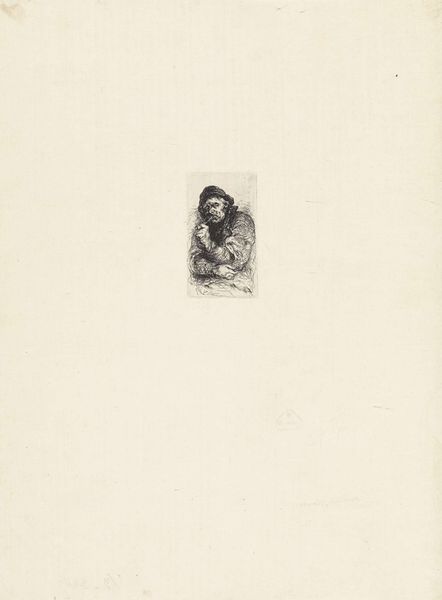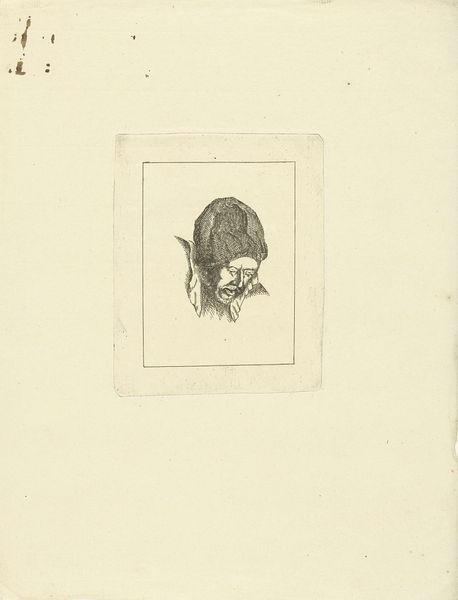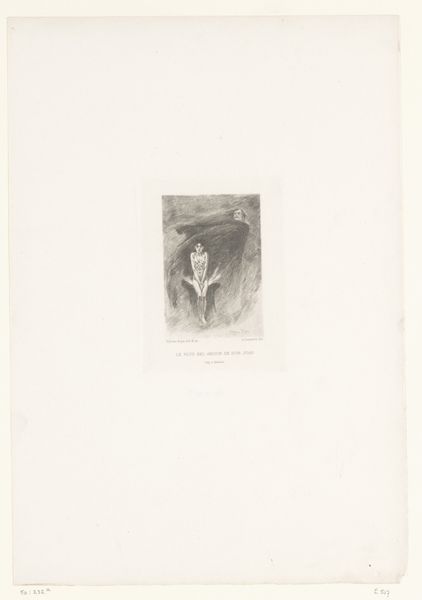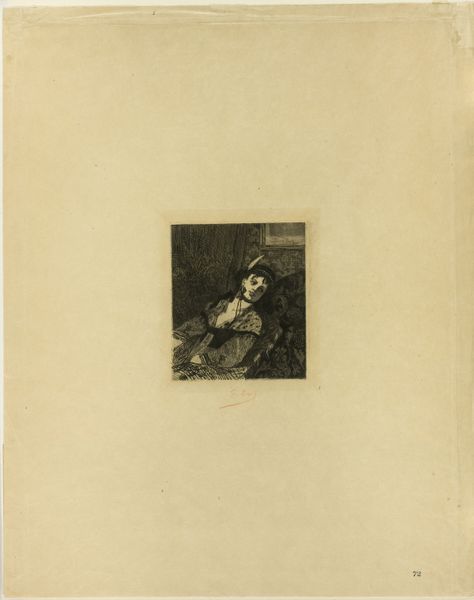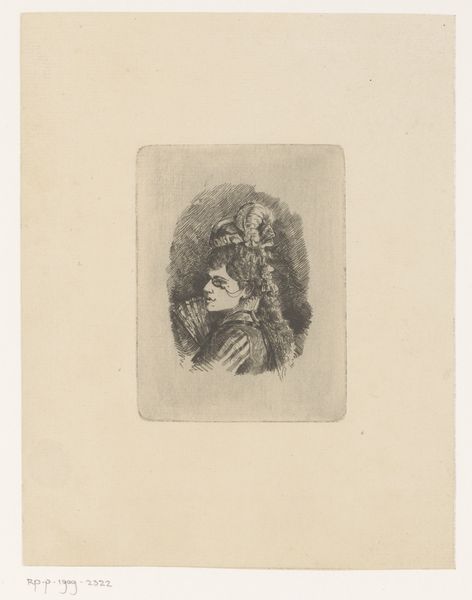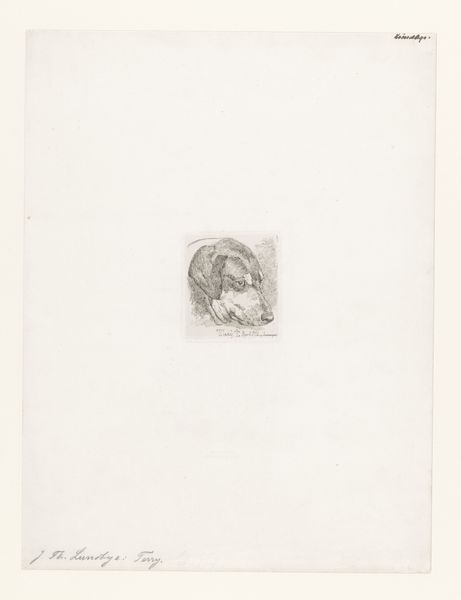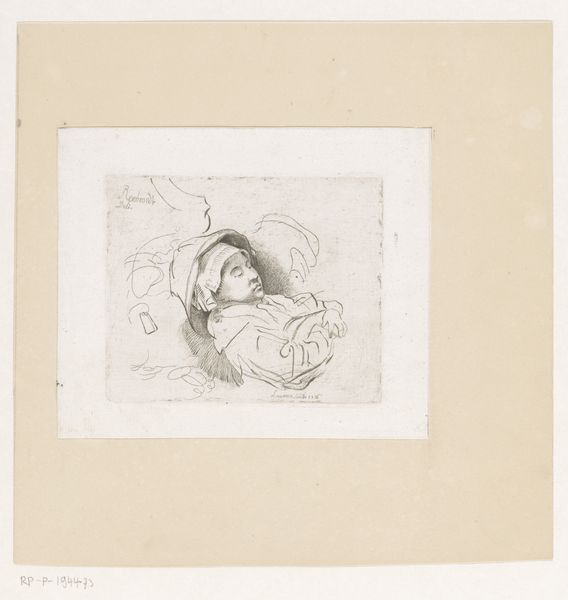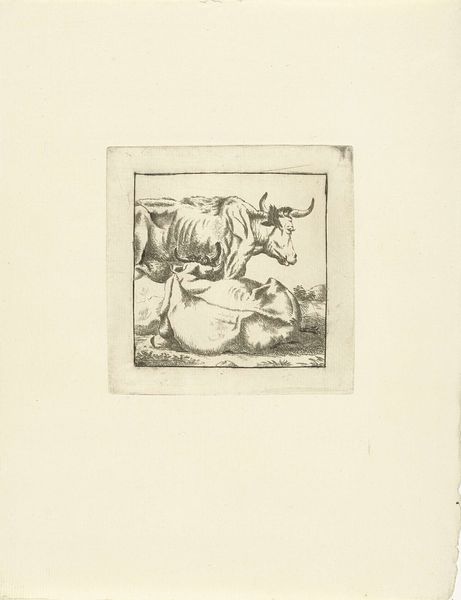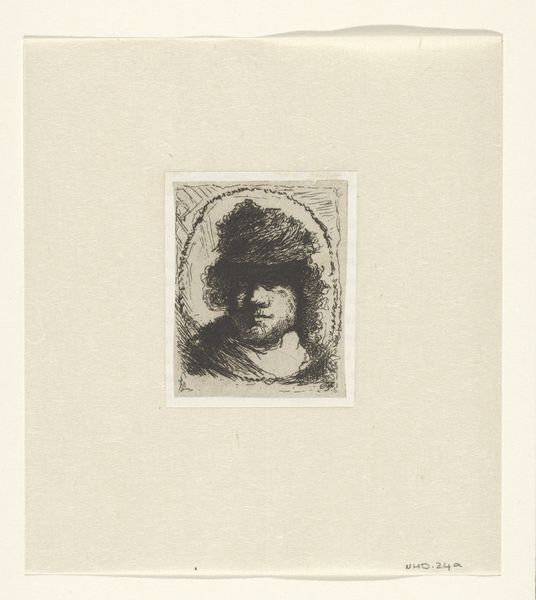
Dimensions: height 123 mm, width 100 mm
Copyright: Rijks Museum: Open Domain
Curator: Here we have "Head Study of a Young Man with Beret," a print from around 1750 to 1800, attributed to G. van Citters. It’s an engraving, executed in monochrome. Editor: My first thought is the anonymity of it all. The young man is caught in a quiet, almost melancholic pose. There's a softness despite the sharp lines of the engraving. Curator: Prints like this, circulating in the 18th century, really played a role in democratizing images. Before, portraits were primarily for the wealthy elite. Now, we see a proliferation of studies of ordinary people, even if this might be an idealized version. Consider the way printmaking technologies shifted art’s function. Editor: The beret he wears is quite evocative. It hints at a certain profession or perhaps just a fashion statement. Berets have historically symbolized artists, intellectuals, bohemians— it carries cultural associations of nonconformity and creativity. His is somewhat disheveled which softens the image too. Curator: Absolutely. The politics of dress are always telling. Even a simple beret carried social weight and can hint at artistic leanings, depending on how the wearer is framing themself or wishes to be framed within a complex social web. Editor: And I find the turn of his head rather intriguing. He looks downward, as if in contemplation. It reminds me of imagery of thoughtful heroes or even early Christian saints captured in their quietude before or after heroic acts, albeit stripped bare. Curator: That comparison brings up an interesting question about intention, and the degree to which this study borrows visual language from religious portraiture. The baroque sensibility can indeed lean into melodrama and pathos and evoke this history. The distribution of such a work further muddles intention too. Editor: I suppose we can consider what "aura" an image takes on by who consumes it. But regardless, what is palpable is the raw feeling of human introversion captured within very simple yet sophisticated etching lines. It has the quiet power to invite viewers to delve into introspection and reflect. Curator: Indeed, by stripping down portraiture to its essence, van Citters allows viewers to see themselves reflected in the subject's contemplation, thereby offering a very public and accessible vision. Editor: A quiet image offering boundless contemplations; I’m grateful it exists.
Comments
No comments
Be the first to comment and join the conversation on the ultimate creative platform.
